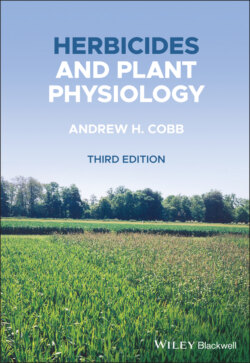Читать книгу Herbicides and Plant Physiology - Andrew H. Cobb - Страница 36
1.9.1 Traditional methods
ОглавлениеIt was recognised in medieval times that the rotation of crops with fallow was the best means to conserve soil fertility and to prevent the build‐up of pests, diseases and weeds. The later use of ‘cleaning’ crops (such as turnips and potatoes) allowed weed control by hand during active growth, and was balanced against ‘fouling’ crops (such as cereals) which could not be similarly weeded. By the mid‐nineteenth century fertility was maintained from clover and livestock manure, and weed control by ‘cleaning’ crops, so that the unprofitable fallow period could be avoided. The advent of chemical fertilisers in the early twentieth century removed the need for clover, and profitability increased by the use of sugar beet as a combined cleaning and ‘cash’ crop. However, after the Second World War, increased urbanisation and industrialisation have reduced the available workforce, and herbicides have gradually replaced the hoe. Similarly, farm practices have become increasingly mechanised, such that the continuous cultivation of one crop (monoculture) has become widespread, and reduced cultivation techniques are now in vogue.
